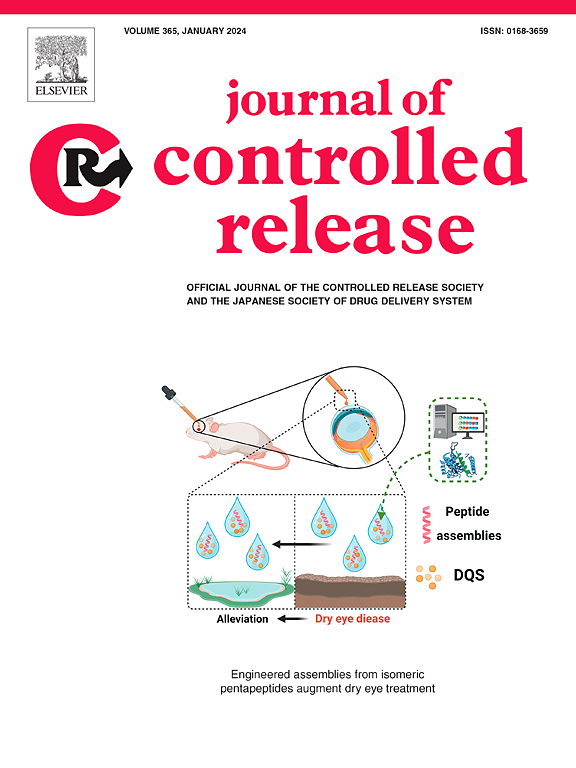玻璃体内小分子药物溶出与释放研究的新型体外模型及其长效制剂
IF 10.5
1区 医学
Q1 CHEMISTRY, MULTIDISCIPLINARY
引用次数: 0
摘要
玻璃体内给药是治疗多种眼病的必要手段。玻璃体内制剂的开发需要高质量的体内实验,这需要大量的动物。这种发展可以通过改进体外测试和利用体外-体内相关性来加速。我们提出了一种体外方法,使用玻璃体透析膜来进行这些研究。该模型是针对小分子开发的,并以溶液中的药物(一盒13种药物,另一盒4种药物)和药物悬浮液进行评估。对于溶液,8种药物化合物中有6种与实验玻璃体清除率相差在2.5倍以内。此外,我们在一个为期150天的曲安奈德混悬液实验中证明了该模型对长效制剂的适用性。该悬浮液表现出与家兔相似的消除趋势。我们相信该系统可以引领引入玻璃体内途径的部位特异性药物释放测试。本文章由计算机程序翻译,如有差异,请以英文原文为准。


Novel in vitro model for intravitreal drug dissolution and release studies of small molecules and their long-acting formulations
Intravitreal drug delivery is essential for multiple ocular diseases. Development of intravitreal formulations requires high-quality in vivo experiments that require a large number of animals. This development can be expedited by improving in vitro testing and utilizing in vitro – in vivo correlation. We propose an in vitro approach using vitreous in a dialysis membrane to conduct these studies. The model was developed for small molecules and evaluated with drugs in solution (13 drugs in one cassette and 4 in another), and a drug suspension. For solutions, 6 out of 8 drug compounds were within 2.5-fold difference to their experimental vitreal clearances. Furthermore, we demonstrated suitability of the model for long-acting formulations in a 150-day experiment with triamcinolone acetonide suspension. The suspension displayed similar elimination trend as has been observed in rabbits. We believe this system can lead the way in introducing site-specific drug release testing for the intravitreal route.
求助全文
通过发布文献求助,成功后即可免费获取论文全文。
去求助
来源期刊

Journal of Controlled Release
医学-化学综合
CiteScore
18.50
自引率
5.60%
发文量
700
审稿时长
39 days
期刊介绍:
The Journal of Controlled Release (JCR) proudly serves as the Official Journal of the Controlled Release Society and the Japan Society of Drug Delivery System.
Dedicated to the broad field of delivery science and technology, JCR publishes high-quality research articles covering drug delivery systems and all facets of formulations. This includes the physicochemical and biological properties of drugs, design and characterization of dosage forms, release mechanisms, in vivo testing, and formulation research and development across pharmaceutical, diagnostic, agricultural, environmental, cosmetic, and food industries.
Priority is given to manuscripts that contribute to the fundamental understanding of principles or demonstrate the advantages of novel technologies in terms of safety and efficacy over current clinical standards. JCR strives to be a leading platform for advancements in delivery science and technology.
 求助内容:
求助内容: 应助结果提醒方式:
应助结果提醒方式:


